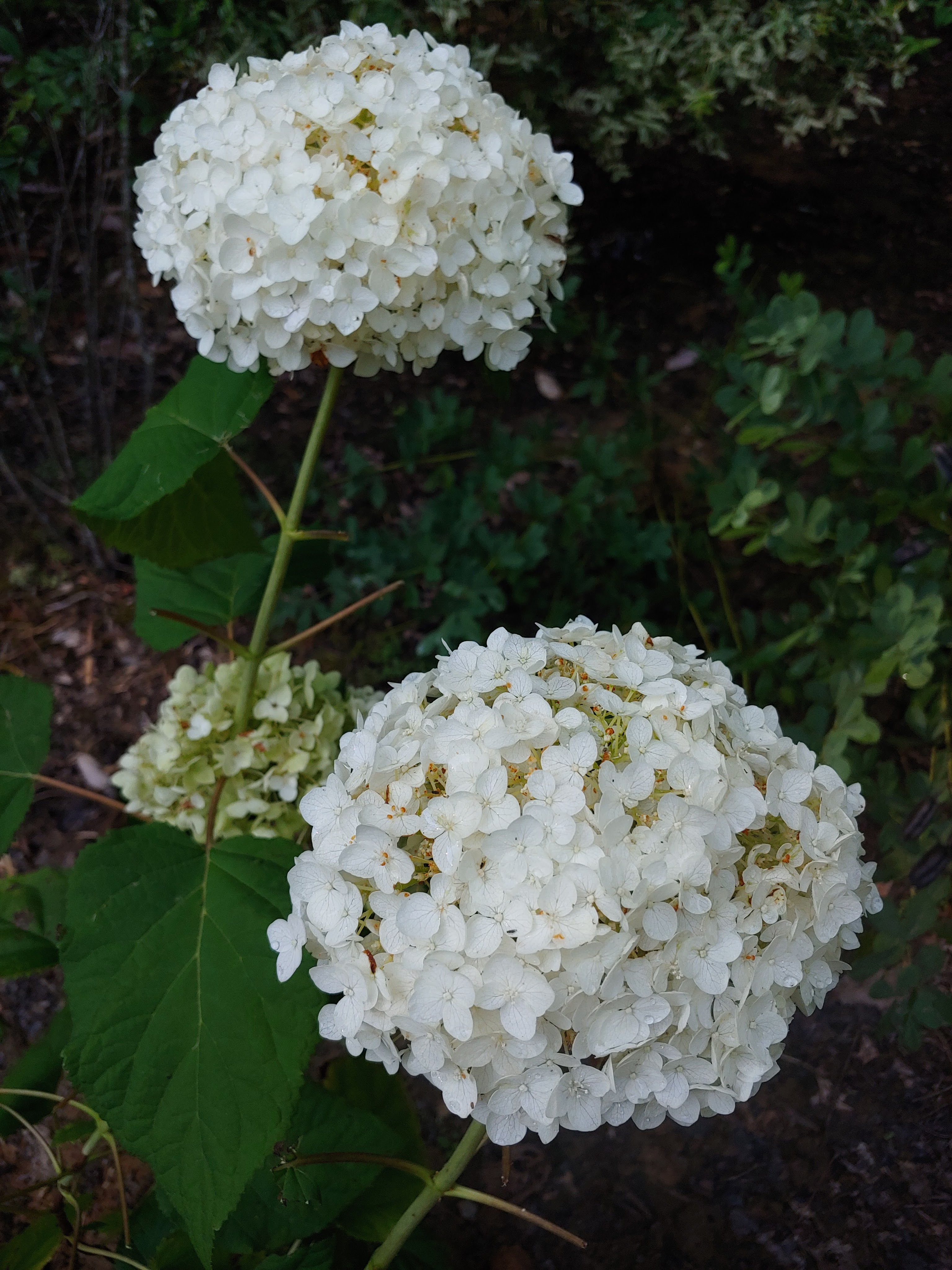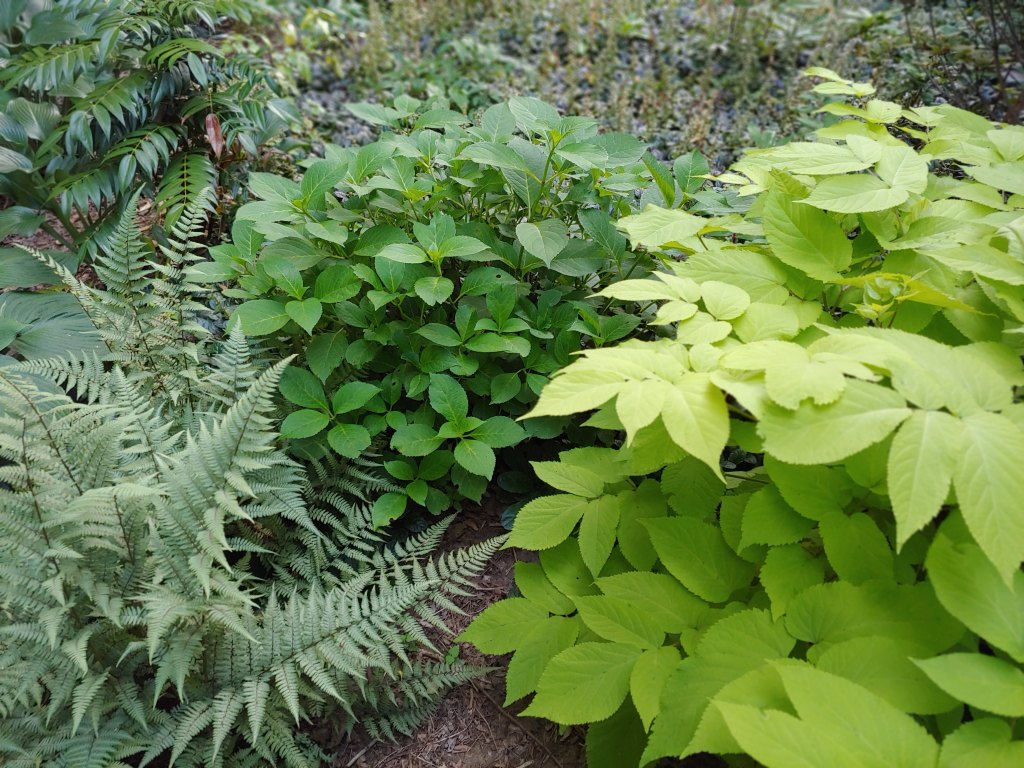There are many problems in the garden, but none that are unusual or overly concerning. No doubt, a certain decline from the lushness of spring is expected with the heat of summer.

A few Japanese beetles were spotted early in summer, but now there are none on the Ostrich ferns, or elsewhere. No other beast would take a bite from the ferns, so I am mystified why this vigorous fern is targeted. But, no harm is done except this patch of Ostrich ferns looks ragged until frost. Nothing is sprayed to prevent beetles, but with a dense cover of trees and shrubs the number of birds must be the reason that numbers are so small. Whatever has happened to limit the quantity of beetles this summer, I don’t know, but I’m not complaining.

Recent weeks have been dry, and while not so hot as other parts of the country, the occasional thunderstorm provides only temporary relief. Some small hostas, I suspect ones with shallow roots, are suffering, and these will look miserable until frost no matter how much rain falls late in the summer. I do not water established plants, and only occasionally newcomers if I notice their impending demise, so an amount of shabbiness is expected in late summer.
I chastise myself whenever I wish for remnants of tropical storms or hurricanes to strike the garden. Their substantial rainfall is greatly appreciated, but of course I am aware that these storms can bring great suffering to those closer to the coasts. Are all gardeners such a selfish lot? In any case, I am anxious to get back to a pattern of regular afternoon storms that will improve the garden, and this contrary mood.

Again, I have delayed too long in spraying the deer repellent. Daily evidence of their presence is seen in damp soils in the lower part of the rear garden, and here a smooth hydrangea (Hydrangea arborescens, above) has been stripped of all leaves, half one night, then the rest. It was getting too tall anyway, so I’ll cut it back and certainly it will flush at least some new leaves.
The mophead hydrangeas are past their late spring flowering, and ideally the old blooms would be pruned off. Probably, I’ve never done this, and how likely is it I’ll deadhead them this summer? The reblooming hydrangeas will set buds for a round of late summer flowers if there is adequate moisture, which today doesn’t look good, but this can change in a hurry.

Weeds are, as always, a problem in areas that do not have a dense cover of foliage. Planting in the lower, rear garden is still a bit thin, so here there is an ample crop of weeds that must be regularly chopped out or pulled. I am too often not attentive in assuring that weeds are uprooted so they don’t grow back quickly, and without mulch in this area I must keep after it regularly. I expect that shrubs planted in recent years will fill in the next two years, and with many parts of the garden already covered by foliage, I can expect many fewer problems and more hours of relaxation by then.
Do you have any knowledge or advice concerning the oak mites that are plaguing everyone that were earlier infested by the cicadas? It’s unfortunately kept me indoors from gardening to keep from being bitten 30+ times. Is there anything short of wearing a hazmat suit when you go out?
I was happy not to have any cicadas, but to experience them for short periods visiting our sons. Now, while the presence of oak mites has not been verified, there seems a general agreement that this is what people are experiencing. Unfortunately, there seems little can be done except wait for the cicadas to go underground.
Is that Sun King Aralia in the photo? I am thrilled with this plant, which I bought 2 years ago. I was afraid it hadn’t returned this April, but it turns out that it’s just a “late emerger, at least in my yard, so I’m just being careful to mark its location.
Yes, it is Sun King, a wonderful perennial for part shade. And yes, it comes up late every year.